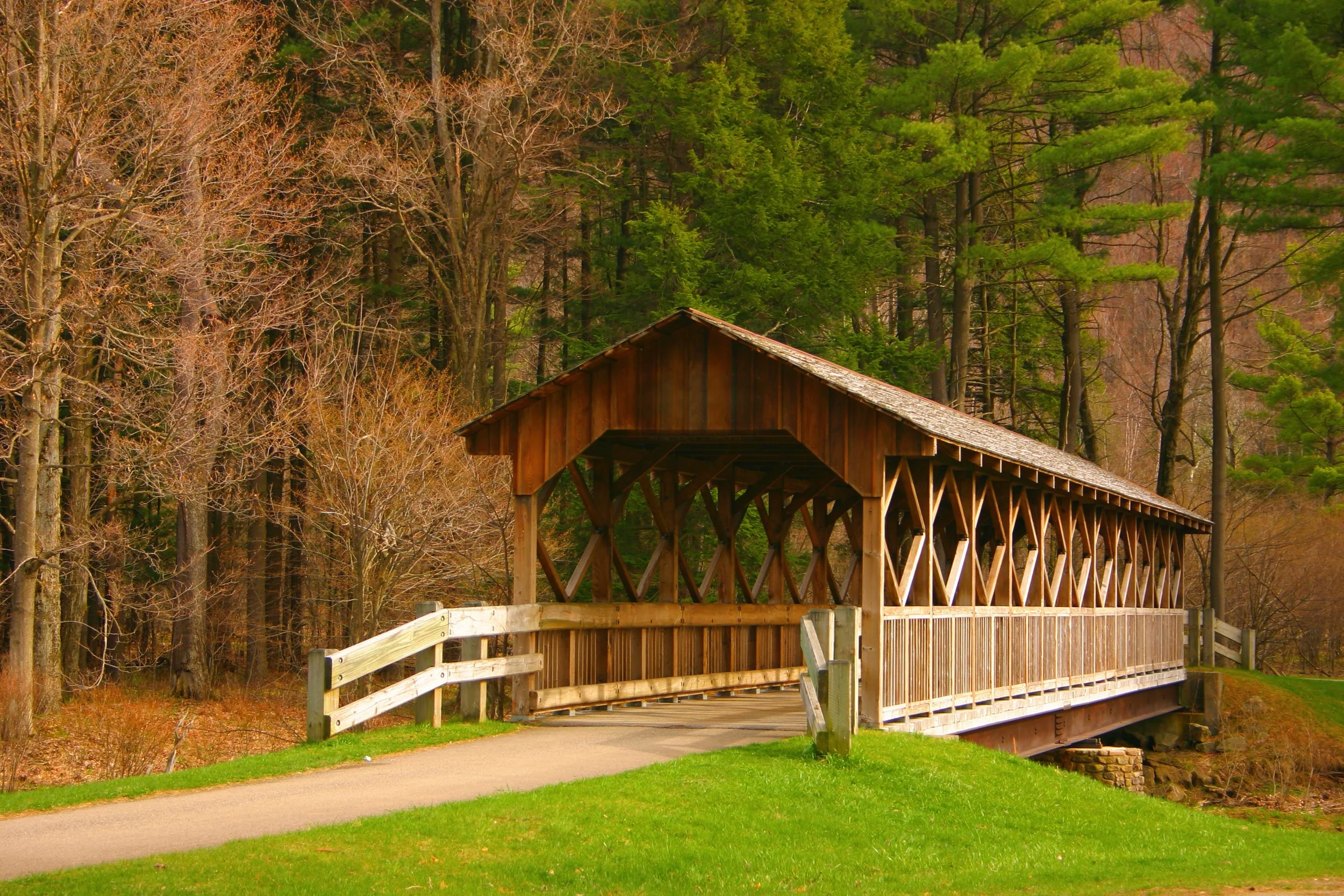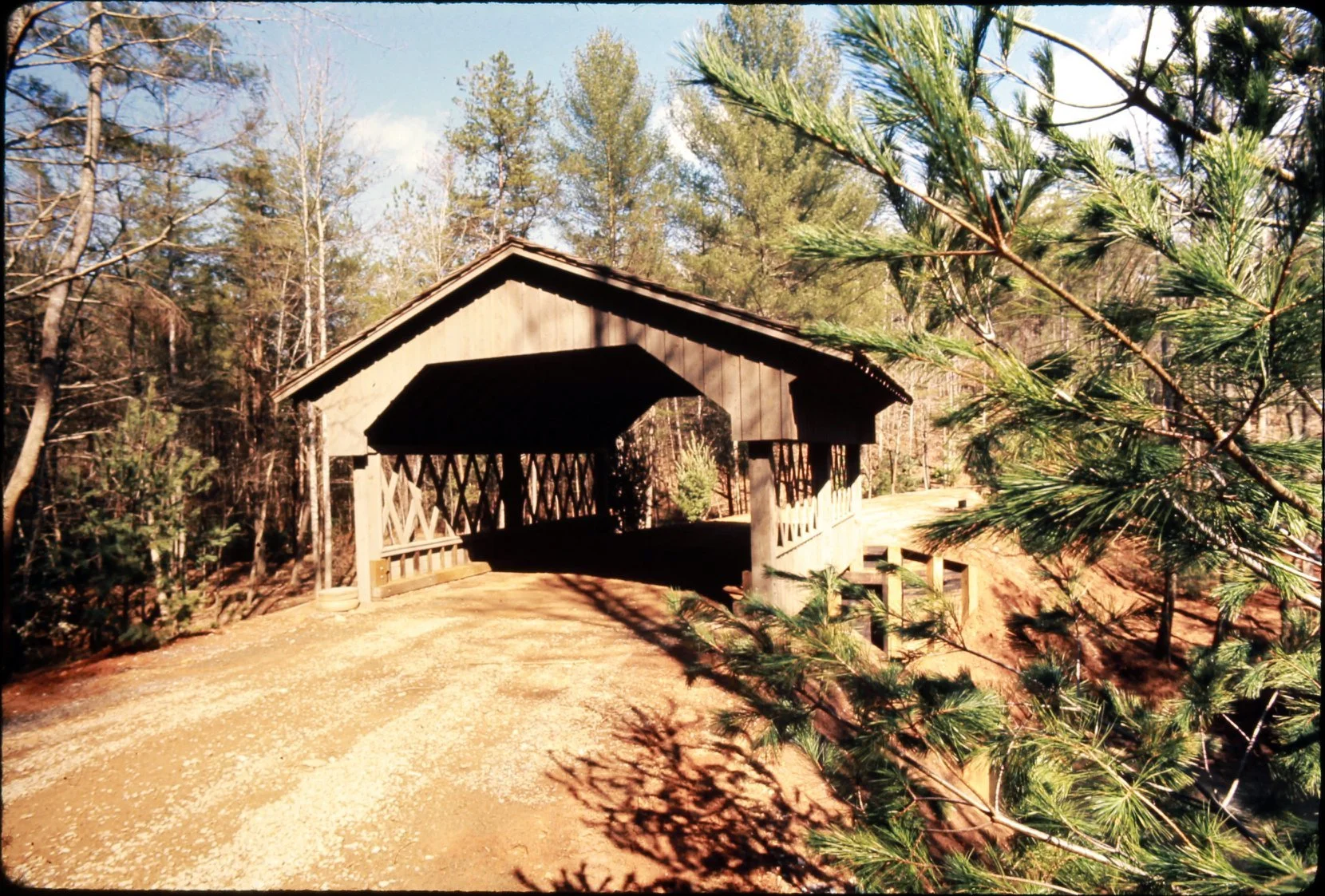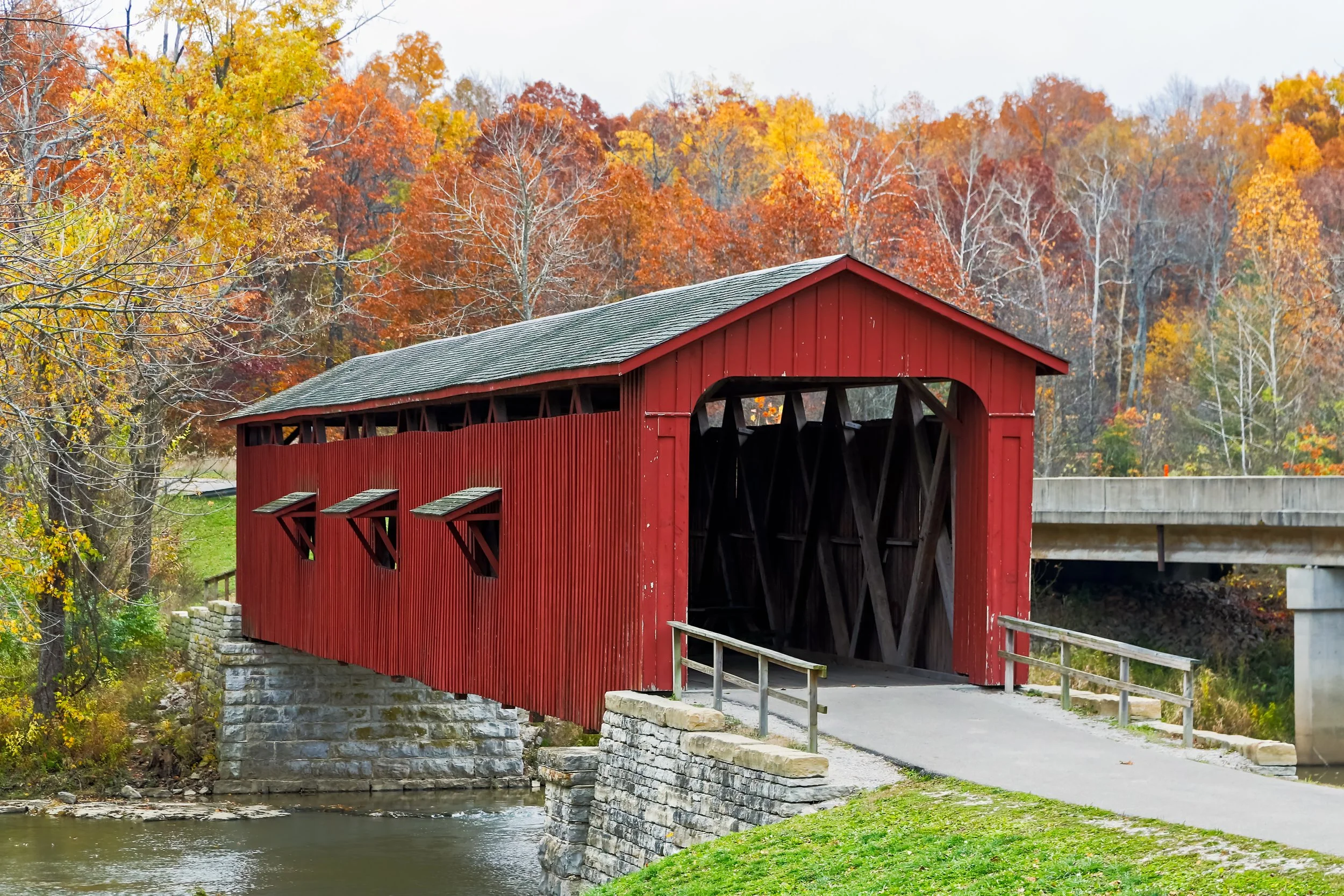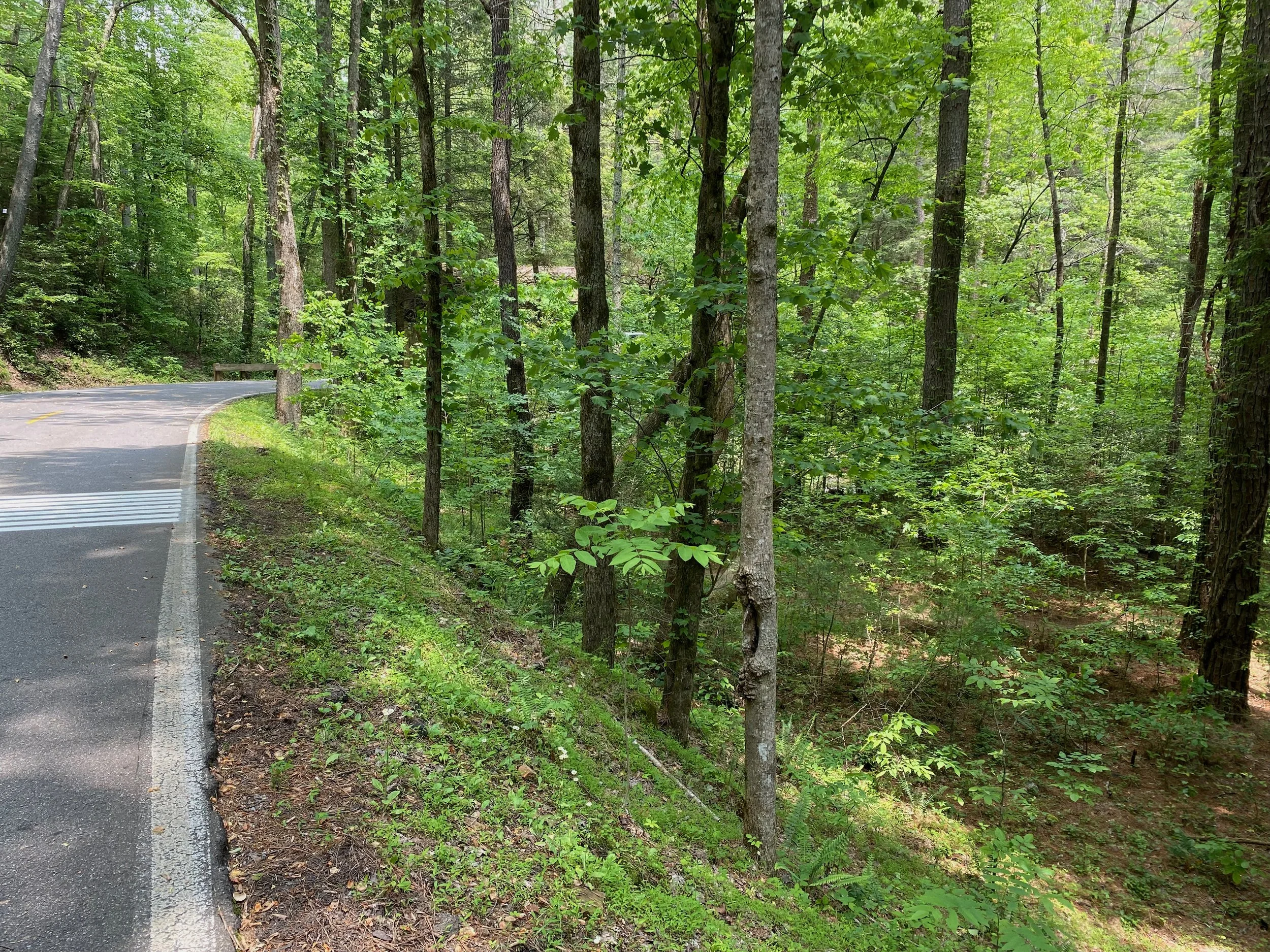Our Covered Bridge
Newly visible bridge and road beyond, greatly enhancing safety. Photo by Mark Green
History of covered bridges in the US
An example of a covered bridge, in the style emulated by our Big Canoe bridge. Adobe Stock photo
During the early 19th century, covered bridges were introduced in rural U.S. communities as an innovative solution deterioration posed by the elements on existing bridges, made from locally abundant timber. They were covered to protect from weathering and to provide stability against winds and heavy traffic.
Beyond their practical use, covered bridges also came to symbolize American rural life and architectural creativity, serving as picturesque subjects for artists and as communal spaces for social gatherings and shelter during poor weather.
History of Big Canoe’s covered bridge
Covered bridge in the early days, circa 1973. Note the roads were gravel at the time. Photo courtesy of North GA Mountains History Center
Another typical rural bridge in traditional red. Adobe Stock photo
Big Canoe’s beloved covered bridge was built in the early ‘70s, at the dawn of the development’s existence. It was constructed using modern materials and techniques, supported by steel beams. There was an existing bridge before, with a marble foundation, a large slab of which can still be seen below the current bridge. Therefore the purpose of the new bridge was not the 19th century protective reason, but the foundation of the charm and character of Big Canoe, along with the guard house at the main entrance.
The covered bridge has been cited by many residents as the reason they fell in love with Big Canoe. “You had me at the bridge,” I’ve heard people say.
Covered bridge now
The bridge, till recent years, was quite visible coming from both directions. In the past 15 years or so, fast-growing invasive tree saplings grew to where their foliage was hiding the bridge and the road beyond. As it is in the middle of a curve, visibility is important for safe driving. That visibility was compromised, and the Trails Committee offered Public Works to help with restoring the view of the structure and oncoming traffic, enhancing safety. With recent expenses made by the community to repair the bridge we felt it was important to preserve our investment made in both safety and restoring the iconic charm of the structure, a core component of the character of Big Canoe.
The bridge was hardly visible before the Trails Committee work began. Photo by John Hansen





